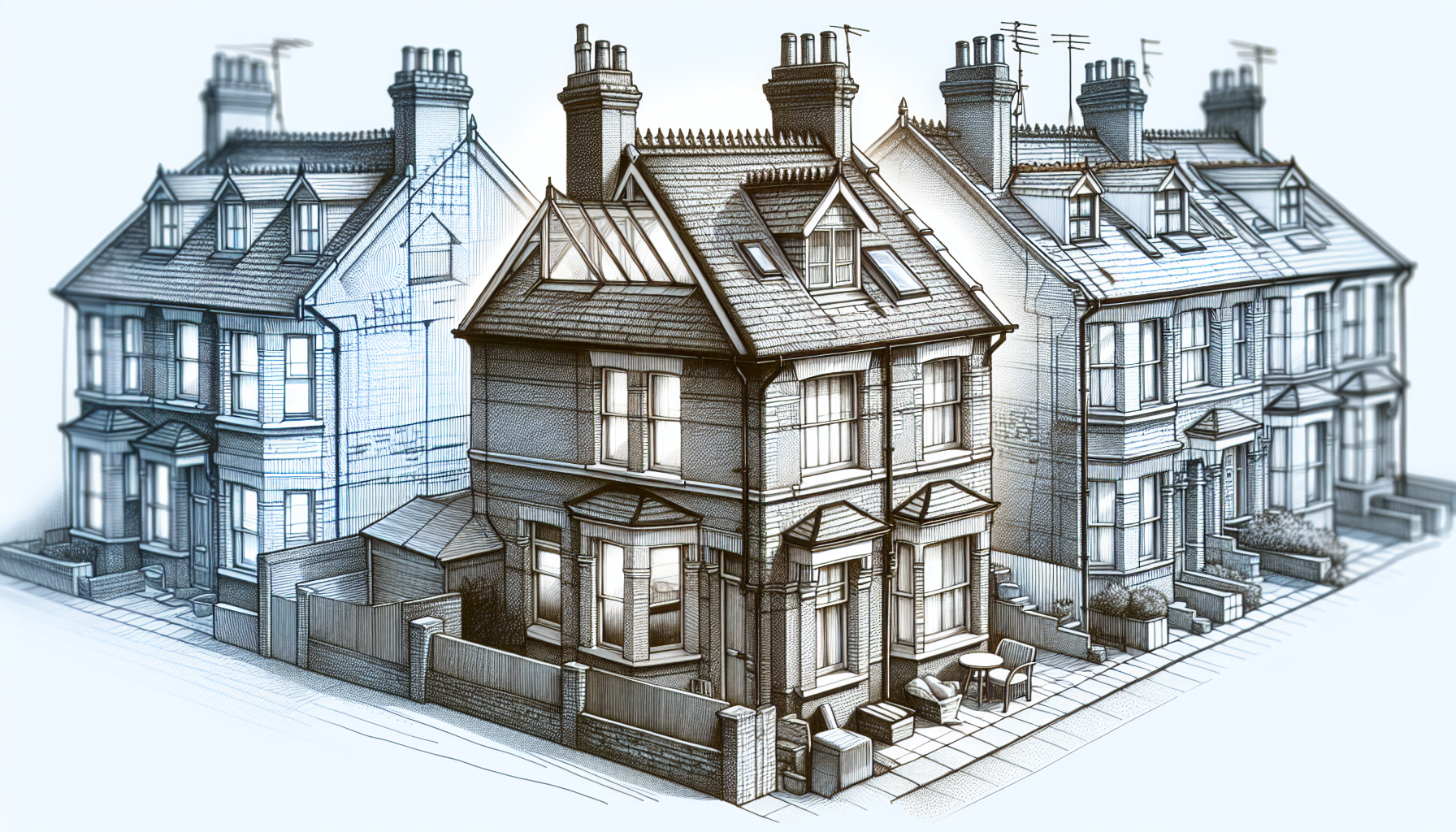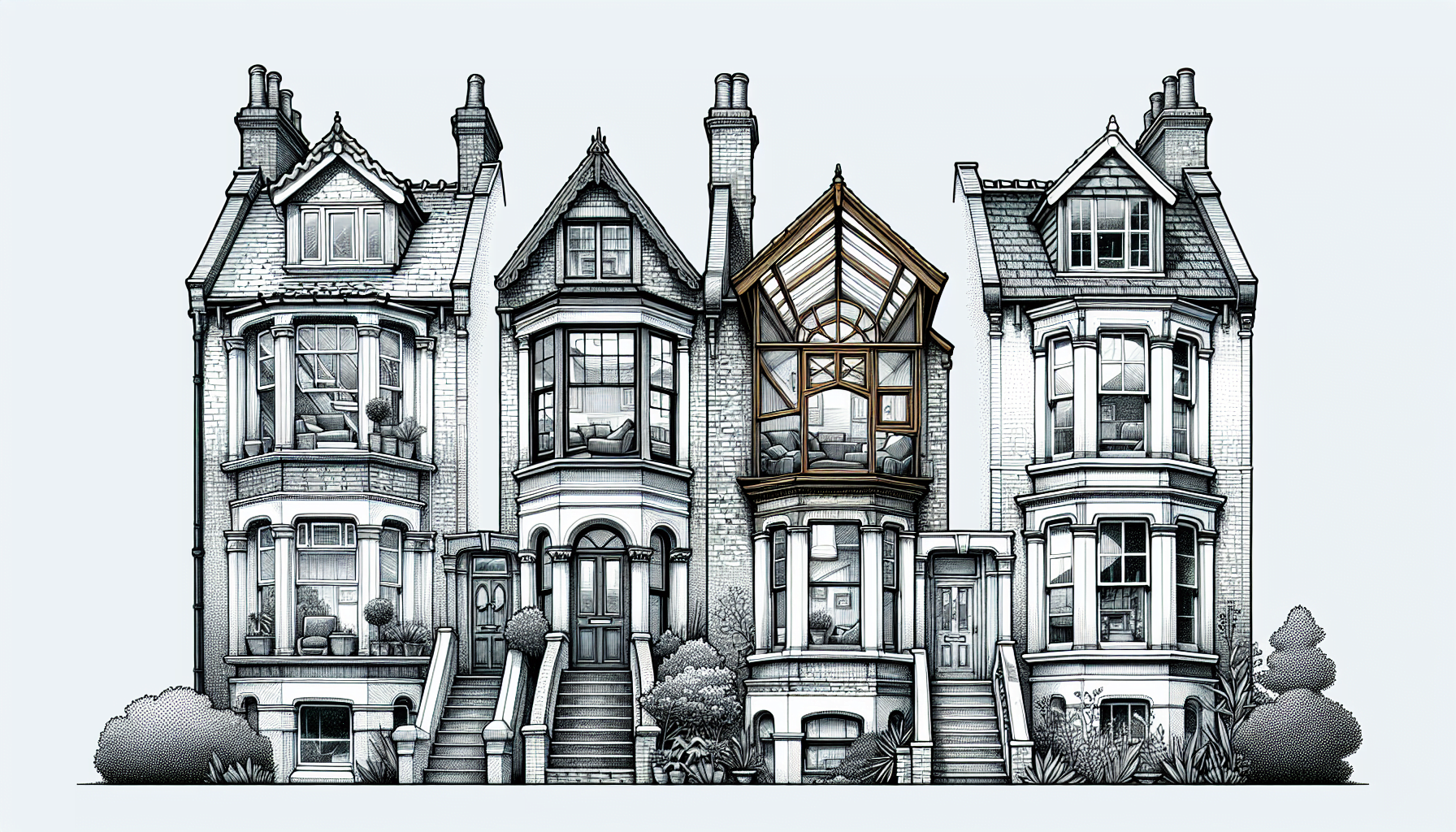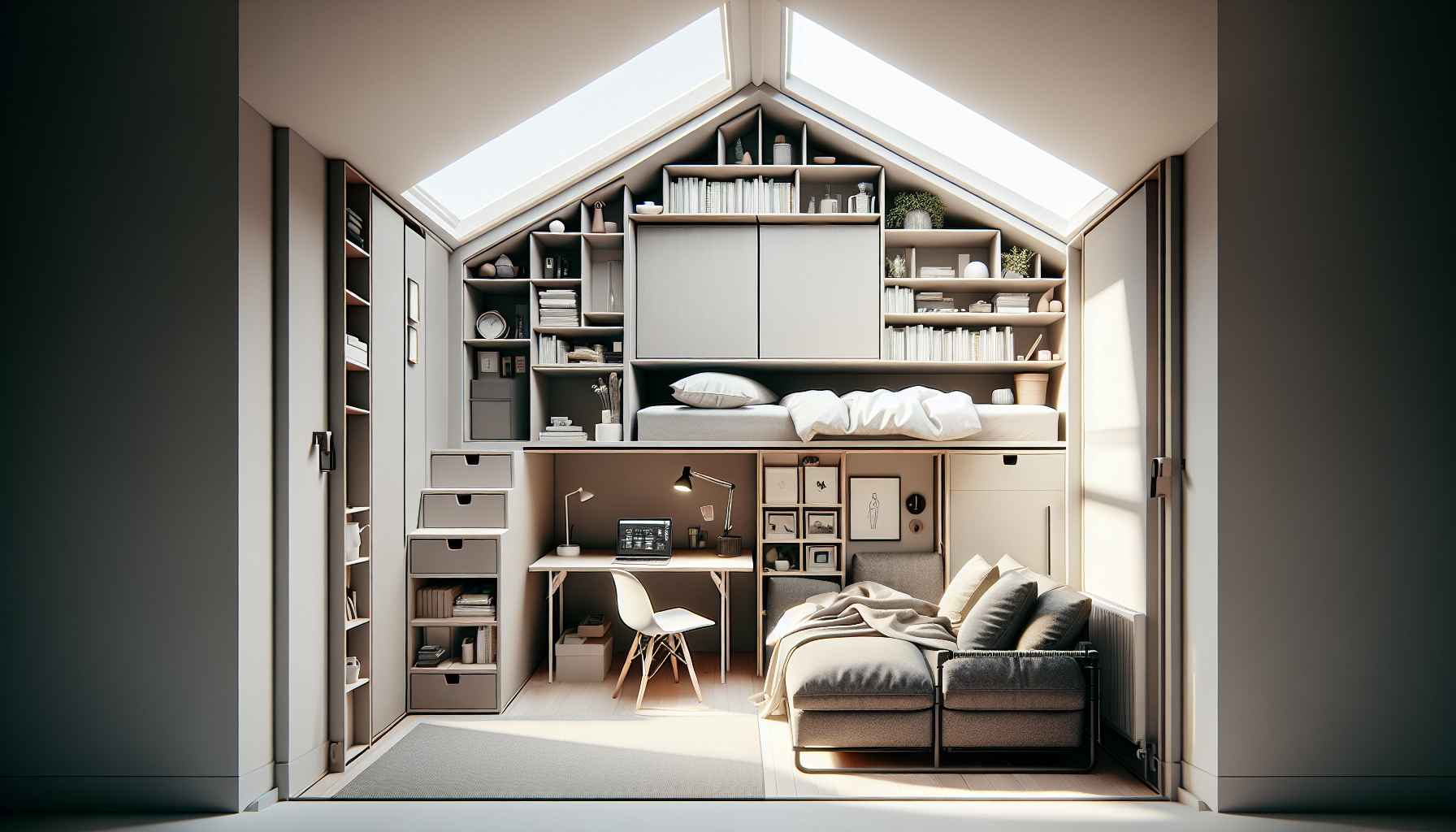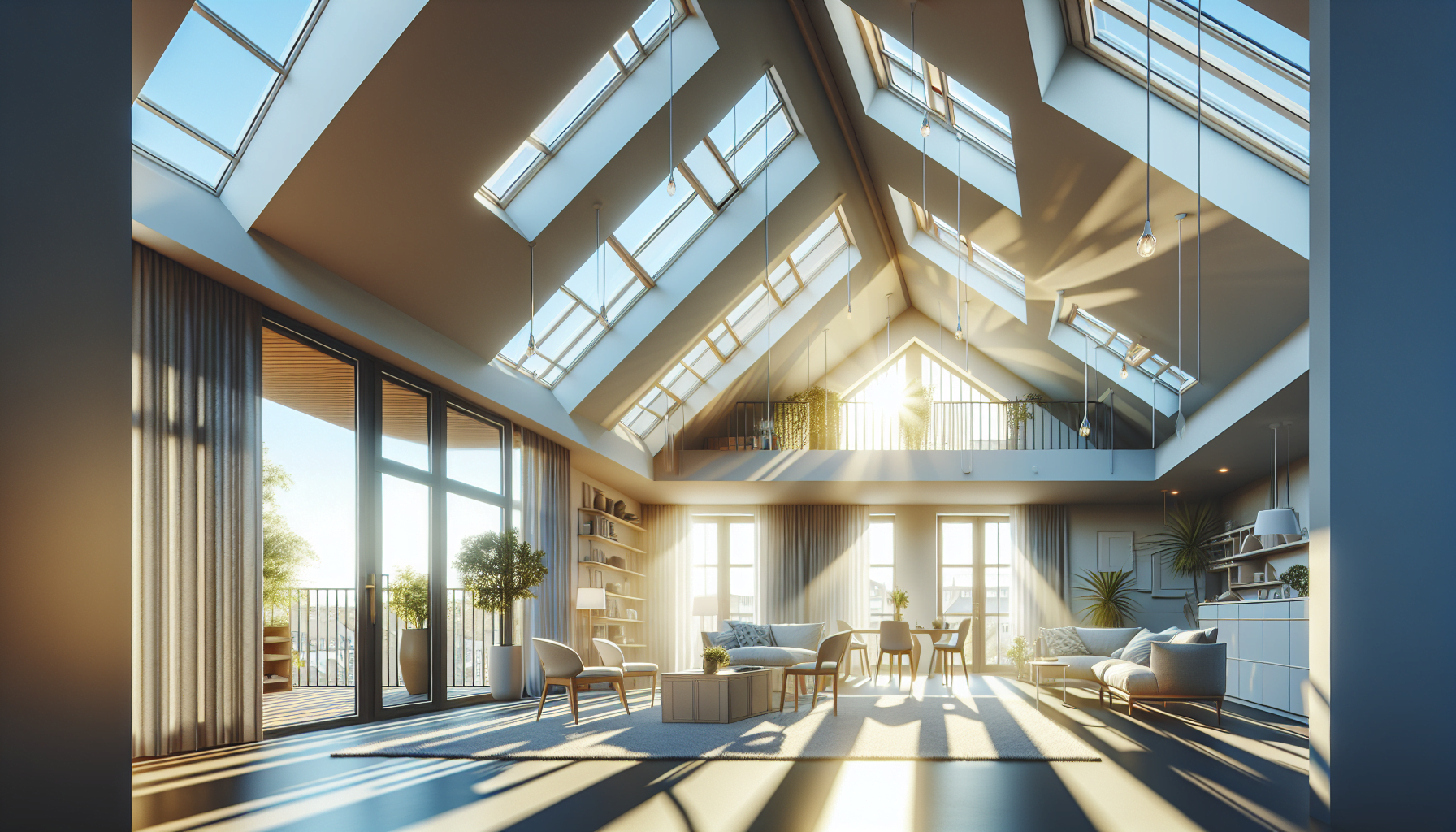Ever wondered if a loft conversion is viable for your terraced house? This guide is here to help. We will cover the feasibility, benefits, and steps to a successful terrace house loft conversion. Whether you have a small or spacious attic, converting it can enhance your living space and boost your property value.
Key Takeaways
Loft conversions in terraced houses, especially those built pre-1960, can significantly increase property value and living space, utilizing the existing footprint for an upward expansion.
Key considerations include understanding planning permissions and building regulations, ensuring structural integrity, fire safety, and the completion of a Party Wall Agreement to maintain neighborly relations.
Choosing the right type of loft conversion, such as dormer, mansard, or Velux, and incorporating smart designs like open-plan layouts and proper insulation can maximize the space’s functionality and comfort.
Introduction
Terraced houses, with their quaint charm and solid craftsmanship, especially those built pre-1960, are prime candidates for loft conversions. These hidden gems often boast larger lofts and generous headroom, making them ripe for renovation. But, don’t be fooled into thinking this is a venture reserved for spacious abodes. Even smaller terraced houses can blossom with the right design and planning – transforming compact attics into cozy nooks or vibrant living spaces.
Remember, in this venture, each step of the way, from the entrance hall to the highest point of your new loft, demands careful consideration. This guide is crafted to navigate you through the twists and turns of terraced house loft conversions, providing expert insights and answers to your burning questions. With careful planning and a trusted team, the journey from dusty attic to divine den is not just attainable but can significantly amplify your property value and day-to-day living experience.
Understanding Terrace House Loft Conversions

The structure of a terraced house offers a distinctive plan for loft conversions. The steep roof pitch and shared party walls create an almost pre-designed space for transformation. Imagining the loft space of many terraced houses, particularly those from the bygone era before the 1960s, you’ll find ample headroom – a key ingredient for a successful conversion. But why does this matter? Well, it’s the difference between a cramped storage area and a spacious living space, a distinction that could redefine your home.
Pursuing extra floor space doesn’t have to conflict with the present structure. Terraced house loft conversions, especially in mid terrace houses, are about repurposing attic space between two adjoining homes into a harmonious extension of your living area. With the right guidance from loft conversion specialists, what may seem like an intimidating project becomes a seamlessly integrated part of your terraced home, enhancing both your lifestyle and your house’s loft appeal.
Key Benefits of Loft Conversions in Terraced Houses
Imagine stepping into a newly minted space that not only serves your needs but also elevates the worth of your terraced home. It’s not a fantasy; a well-executed terraced house loft conversion can:
Boost property value by as much as 20%
Expand upwards and tap into the existing footprint of your home
Create a sustainable and resourceful approach to urban living without the need for additional land
The rewards of a terraced house loft conversion don’t stop at financial gain. It’s a smart investment that adds value and functionality to your home.
The transformation of a seldom-used attic into a vibrant living space can breathe new life into your terraced house. Picture a loft conversion that not only provides more living space but also revitalizes your entire home’s ambiance. It’s an investment that pays dividends in quality of life, functionality, and environmental consciousness.
Planning Permission for Terrace House Loft Conversions
Before starting construction, it is essential to comprehend the complex web of planning permissions. While it’s true that many terraced house loft conversions fall under Permitted Development Rights, assuming you can proceed without a nod from planning authorities is a gamble not worth taking. The line between needing and not needing permission is nuanced – does your loft extension alter the existing roofline or exceed 40 cubic meters? If so, you may find yourself submitting plans to your local council.
For those residing in conservation areas or in a listed terraced house, the rules tighten further. Here, the unique character of your property and its surroundings come under scrutiny, and loft conversions often require a green light from planning officials. This isn’t a hurdle but rather a safeguard, ensuring that your loft conversion cost includes respect for the area’s heritage and your neighbors’ peace of mind.
Building Regulations Compliance
Achieving a compliant loft conversion involves meeting building regulations, which are standards set to guarantee the safety and structural soundness of your new area. Regardless of whether your loft conversion requires planning permission, it will need to meet these regulations.
For instance, have you considered the load-bearing capacity of your existing floor joists? In many cases, new joists are necessary to support the loft conversion, and this is where a structural engineer becomes your guide. Fire safety is another critical aspect; your loft conversion project must include measures like mains-powered smoke alarms and fire-resistant floor joists.
Additionally, if your loft becomes a third story, escape routes and fire-safe doors come into play. And let’s not forget about the comfort of your new living space – proper insulation not only satisfies building regulations but also contributes to a cozy and energy-efficient home.
Party Wall Agreements: What You Need to Know
Maintaining good relations with neighbors is a fine art, especially concerning shared walls. These shared structures represent a common concern in terraced house loft conversions, and a Party Wall Agreement is your passport to a smooth project. Issuing a Party Wall Notice to your neighbors is more than a courtesy; it’s a legal requirement if structural changes to the party wall are on the cards.
The essence of this agreement is to protect both parties – ensuring that your loft conversion doesn’t infringe on the structural integrity or cause damage to the adjoining property. It’s about transparency and cooperation, fostering good relations and a mutual understanding of the work ahead. And remember, overlooking this step can result in conflicts and costly delays, so consider involving specialists who can manage the process with finesse.
Choosing the Right Type of Loft Conversion

Choosing the appropriate loft conversion type is like picking the right dress – it needs to fit perfectly and enhance your home’s existing structure. The popular rear dormer loft conversion, for example, extends from the back of the house, providing ample headroom and floor space, often with the added bonus of vertical windows for garden views. Alternatively, the L-shaped dormer extends to the side and is particularly suited for end-of-terrace properties, offering an abundance of space and layout flexibility.
Mansard loft conversions are the grandiose option, creating an entirely new story with a flat roof and inwardly sloping rear wall. Although more costly, they offer full headroom and a substantial increase in usable space. A mansard loft conversion is perfect for those seeking a less intrusive approach. On the other hand, a roof light loft conversion, also known as Velux loft conversions, are your best bet. They maintain the roof’s existing slope and invite light in through stylish skylights, all without the need for structural alterations.
Cost Considerations for Loft Conversions
The cost of a terraced house loft conversion is a crucial aspect to consider. Costs can swing widely, from £20,000 for a modest Velux conversion to upwards of £75,000 for a comprehensive mansard transformation. The scale of the project, quality of materials, and your location all play a role in the final price tag. It’s worth noting that smaller projects like a Velux conversion can be more pocket-friendly, while a full-blown dormer or mansard conversion will require a heftier investment.
However, cost is only one side of the coin. The other is the potential return on investment. Transforming your loft into a double bedroom, for example, can significantly increase your home’s market value, making the initial outlay a wise long-term investment. Keep in mind that careful planning and budgeting upfront can help mitigate unexpected costs and ensure the loft conversion cost aligns with your financial goals.
Optimizing Space in Your Loft Conversion

The appeal of a loft conversion not only comes from the extra space but also from the smart utilization of that area. Embracing an open-plan layout can dissolve barriers and create a flowing, unified area that caters to a range of activities. Under-eaves storage, built-in wardrobes, and bespoke shelving are ingenious solutions that leverage every inch of the loft’s unique dimensions, ensuring that no space is wasted.
Hidden compartments and tailored storage solutions maintain a tidy and spacious atmosphere, essential for loft conversions where every square foot counts. These design choices not only maximize the existing storage spaces but also enhance the functionality and aesthetic of your home, turning the loft into a seamlessly integrated part of your living experience.
Staircase Solutions for Loft Access
The loft staircase, also known as loft stairs, leading to your new loft serves more than a functional need; it acts as the entrance to your newly created space. Ideally, the staircase should align with the existing one below, creating a harmonious transition from one level to the next. Space considerations are paramount – the staircase must complement the loft’s design without encroaching on the lower floor’s living areas.
Safety and comfort also dictate the staircase design, with regulations stipulating a maximum pitch and the requirement for sturdy handrails. The staircase should not only provide easy access but also blend with the overall aesthetic of your home, enhancing the entrance hall and contributing to the loft’s inviting atmosphere.
Natural Light and Ventilation

The infusion of natural light and fresh air can transform a loft from a mere extension to a sanctuary. Strategically placed skylights and dormer windows invite the sun’s rays, minimizing the need for artificial lighting and creating an airy, open feel. It’s not just about aesthetics; proper ventilation ensures a healthy living environment, free from the stale air and condensation that can plague attic spaces.
Energy efficiency is another consideration; modern, top-hung windows with energy ratings maintain insulation while offering unobstructed views and enhanced ventilation. Incorporating such elements in your loft conversion can result in a comfortable and cost-effective living space that’s bright and welcoming throughout the year.
Hiring Loft Conversion Specialists
The intricacy and subtle details of a terraced house loft conversion necessitate the skills of experts. These professionals bring a wealth of knowledge and experience, ensuring your project adheres to the highest standards of design, planning, and regulation compliance. From initial surveys to the final touches, a team of specialists can navigate the unique challenges of terraced houses, such as handling party walls and optimizing roof types.
When selecting your team, look for a proven track record with terraced homes and a comprehensive service offering that covers every aspect of the conversion process. This not only streamlines the project but also provides peace of mind that every detail is being expertly managed.
Common Challenges and How to Overcome Them
Like all renovation projects, loft conversions also face their fair share of challenges. One common misstep is overlooking the suitability of the property for conversion, leading to unexpected challenges and costs. Additionally, the allure of a DIY approach may tempt some, but without the necessary expertise, this can result in subpar quality and potential safety hazards.
Selecting an inappropriate roof design can also complicate the conversion process, impacting both space and aesthetics. Understanding the specific challenges associated with terraced houses, such as roof type and access, can aid in making informed decisions that align with both your vision and practical requirements.
Financing Options for Loft Conversions
Financing a loft conversion requires as much strategy as the conversion process. Options abound, from taking out a second mortgage to securing a personal loan. A second mortgage, or a secured loan, allows you to borrow against the equity in your home without affecting your existing mortgage terms. For those with a robust credit score, an unsecured personal loan might be a viable route, offering quick access to funds.
While remortgaging is another option, it’s important to weigh the costs, such as higher interest rates or early redemption charges. Whichever financing path you choose, it’s crucial to consider the long-term implications and ensure it aligns with your financial goals and the scope of your loft conversion project.
Enhancing Energy Efficiency
An energy-efficient loft conversion is not only eco-friendly but also financially smart. Upgrading insulation is a prime opportunity to reduce heating costs and enhance comfort. Sustainable materials like sheep fleece or hemp not only provide exceptional insulation but also minimize environmental impact.
Solar panels, eco-friendly shingles, and LED lighting are just a few of the options that can make your loft conversion greener. These choices not only contribute to a healthier planet but also to a healthier living environment, reducing your carbon footprint while creating a loft space that’s as sustainable as it is comfortable.
Case Studies of Successful Loft Conversions

Actual examples of loft conversions can act as a source of inspiration. A bridal suite in a central Oxford terraced house was developed for just over £33,000, a testament to the affordability and potential of such projects. This particular conversion was executed within six weeks, demonstrating the efficiency and transformative impact a well-planned loft conversion can have.
Another example is a Victorian terrace that underwent a loft conversion extending an impressive 100m2. The homeowner took charge, blending professional guidance with DIY efforts to create a personalized and cost-effective space. These case studies illustrate the vast potential of terrace loft conversions in terraced homes, showcasing what can be achieved with vision and determination.
Summary
With the roadmap laid out before you, the prospect of a terraced house loft conversion should now appear less daunting and more like a journey worth embarking upon. From understanding the unique structure of terraced houses to navigating the complexities of planning permissions and building regulations, you’re now equipped with the knowledge to transform your attic into a valuable living space. Remember, the loft conversion process is a tapestry woven with practical planning, creative design, and technical compliance, all leading to a result that enhances both your property’s value and your quality of life.
May the insights shared here inspire you to view your attic not as a forgotten storage area but as a canvas awaiting your vision. With the right team of specialists, a clear grasp of the legalities, and a commitment to quality and sustainability, your loft conversion can be a crowning achievement. Whether it’s to accommodate a growing family, work from home, or simply indulge in a luxurious retreat, the sky—or rather, the roof—is the limit.
Frequently Asked Questions
Do I always need planning permission for a terraced house loft conversion?
No, you may not always need planning permission for a terraced house loft conversion, as many loft conversions fall under Permitted Development Rights if they meet specific criteria. However, if your house is listed or in a conservation area, you will need approval.
How much can I expect to pay for a loft conversion in my terraced house?
The cost of a loft conversion in your terraced house can range from £20,000 for a basic Velux conversion to £75,000 or more for an extensive mansard conversion. Factors such as size, complexity, and location of your property greatly influence the cost.
What are some common challenges faced during loft conversions?
Some common challenges during loft conversions include assessing property suitability, choosing the right roof design, and dealing with structural changes to party walls. It’s advisable to consult with a professional loft conversion specialist for assistance.
Can a loft conversion improve the energy efficiency of my home?
Yes, a loft conversion can improve the energy efficiency of your home by incorporating sustainable insulation materials, energy-efficient windows, and LED lighting, which can reduce your carbon footprint and energy bills.
How long does a typical loft conversion take to complete?
A typical loft conversion can take around six weeks to complete, but more complex projects may take longer due to structural changes.
